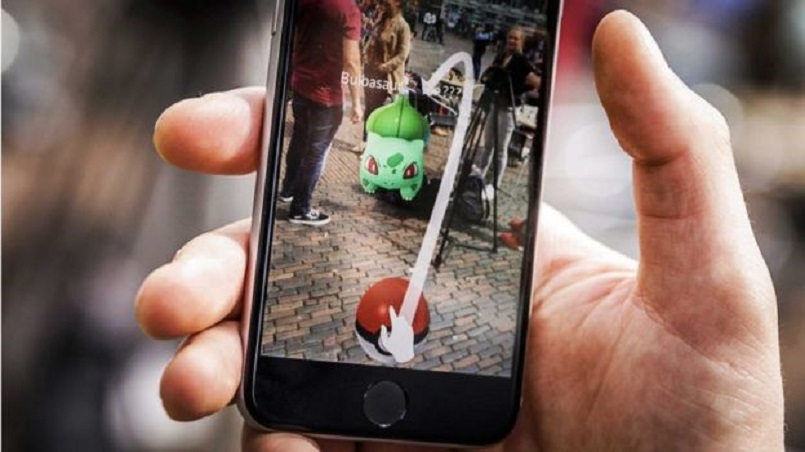
This weekend, you might have noticed some people – more people that usual – wandering around staring at their phones.
To the untrained eye, it might have just looked like more tourists than usual were descending on your town, trying to follow a digital map to their next location. But those playing Pokémon Go could tell what was going on. Since its initial rollout on July 6th, the app already has more Android installs than Tinder, and will soon have more daily mobile users than Twitter. It's already caused some skateboard spills, led a girl to find adead body, and some not-so-clever teens allegedly even used it to lure in victims to rob. But WTF is it?
Technically, it's a free-to-play, location-based, augmented reality, multiplayer online mobile game that also supports its own custom wearable tech. Huh?
It's still a Pokémon game, and has roughly the same principles as every other Pokémon from the past 20 years. You look for the critters, catch them, train them and battle with them. What's different here is that it uses the real world to inform your game experience. The game uses your phone's GPS sensors to track where you are, and makes use of a stylized Google map as the primary game board. Your character moves in the game as you walk around in real life, and events and objects – known as PokéStops – are associated with specific locations in the physical world. In order to interact with them, you need to actually walk to a particular place, like, in the real world. You can look at the game world through your phone's display, which serves as a viewfinder that mixes reality with game objects. Hence the term "augmented reality."
How does that actually play out?
For starters, Pokémon Go comes with no instruction manual, so you'll have to rely on your intuition (or Google) to figure out just how to catch 'em all. The Pokémon will show up at random, but you will not have to compete with any other players for them. You may also notice certain Pokémon cluster in certain spots – for example, fire Pokémon tend to be found near gas stations, grass Pokémon in parks, and ghost Pokémon after dark. (Though law enforcement recommends that you stick to daylight hours.) The more Pokémon you catch, the more points you score as a trainer. You also score points when you rack up free items at Pokéstops, or when you evolve your Pokémon. Once you've accumulated enough experience points to reach Level 5, you can train your Pokémon at the nearest Gym, marked by a wacky-looking laser tower in your map. The Gym will usually be found near a local landmark. Where most people see a pack of weirdos circling a statue and thumbing at their phones, you will see a path to glory.
You mentioned wearable tech?
Walking around all day staring down at your phone may be something you're used to doing anyway, but it's not necessarily the safest option if you're walking around a busy city. Don't worry, though, your phone will vibrate whenever there is a Pokémon near you, so you won't miss anything important. If you want to wear something that looks like a kid's Pokéball watch, there will be an official Pokémon Go Plus wearable released any day now, which is a $35 wrist device that pairs with your phone via Bluetooth, buzzes when you're near a Pokémon and lets you catch them with the push of a button.
How did all this get started?
The idea for the game was conceived in 2013 by the late Satoru Iwata, president and CEO of Nintendo, and Tsunekazu Ishihara of the Pokémon Company as an April Fools' Day collaboration with Google called the Pokémon Challenge. Revealed with a slick trailer onYouTube (which has since been viewed over 17 million times), the "joke" launched a fake competition to find 150 Pokémon hidden in real world locations. The trailer showed participants holding up their phones to reveal the creatures through the device's camera. Little did we know at the time that this would be the premise for the real game launched three years later.
How did it get so huge, so fast?
The game was originally supposed to be rolled out around the world starting in Australia on July 6th, and then it would launch in North America, before moving west to Europe and finally Asia. Things didn't quite go according to plan though. By the time the game was turned on in North America, demand was so high that it made the game's servers grind to a halt causing all kinds of problems. The game debuted at Number One on both iPhone and Android, and there were so many people trying to play it that the system struggled. Lots of players found that they couldn't log in, or if they did, the game would freeze and crash. As a result, the global rollout was paused while things were fixed, which is on set for this week.
